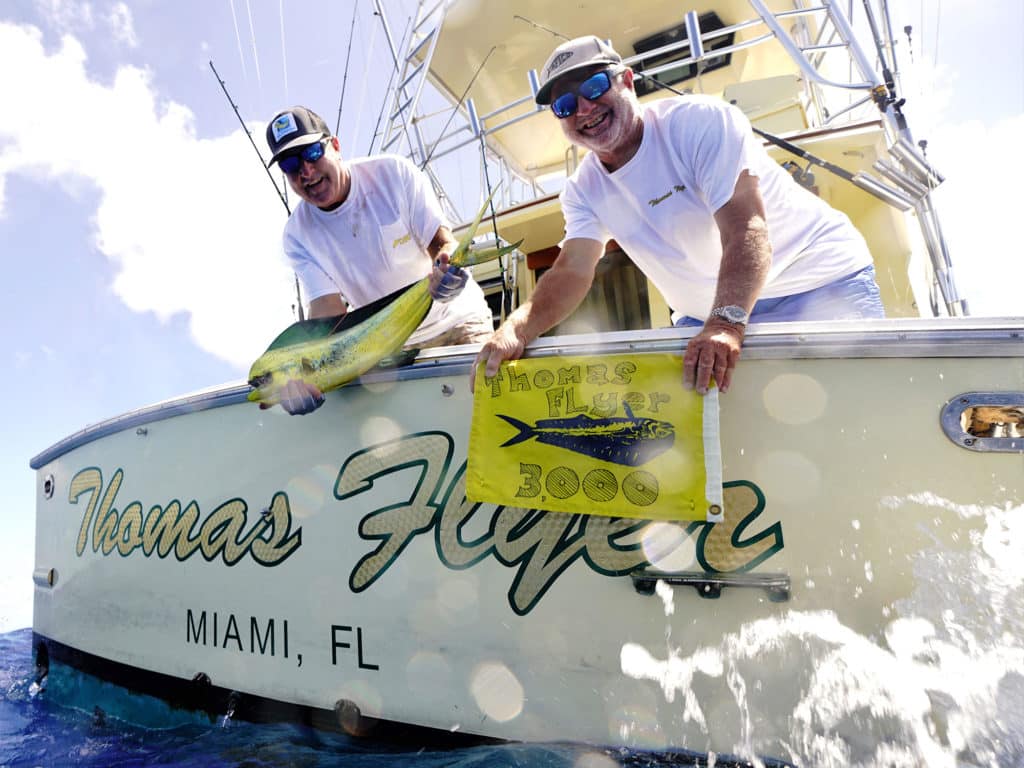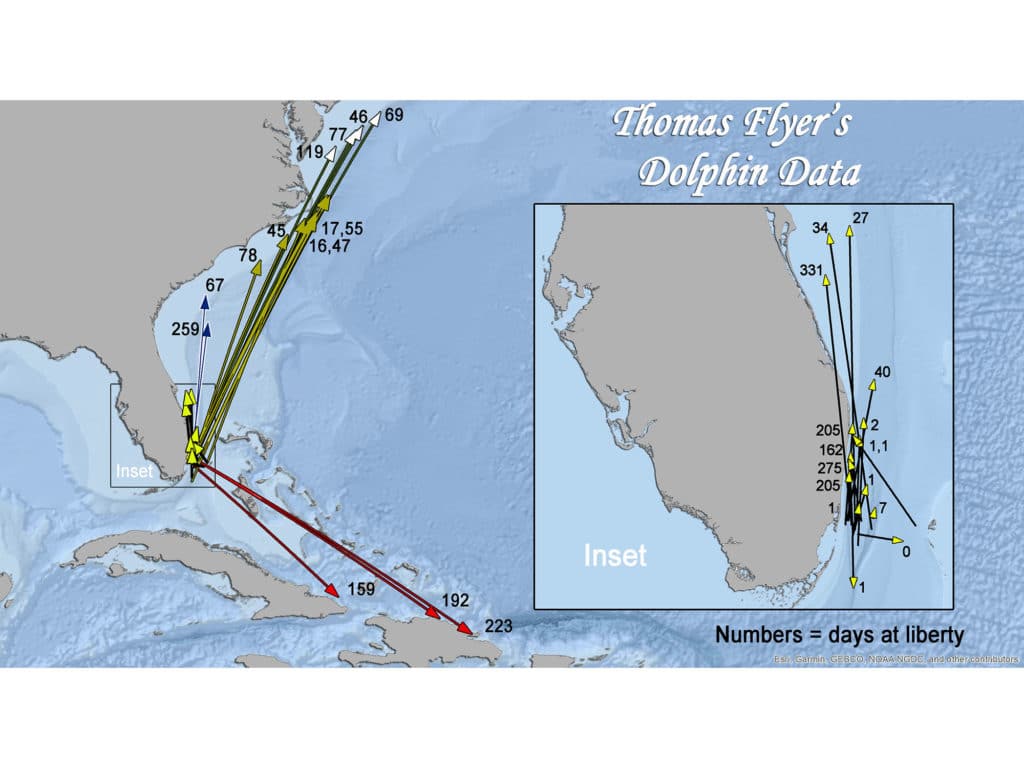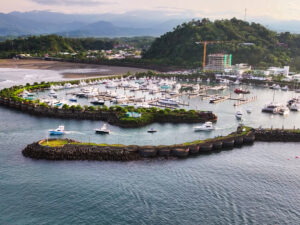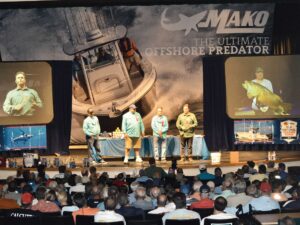
There are thousands of offshore fishing charters around the world, and many catch dolphin during their outings, but only one has tagged and released 3,000 mahi in the name of conservation and science. Working with the Dolphinfish Research Program (DRP) since 2005, this summer, Captain’s Jimbo and Rick Thomas of the Thomas Flyer Fishing Charters achieved that impressive milestone.
For offshore anglers, the DRP provides the best opportunity to understand a vitally important fishery crucial, not only to countless anglers along the entire Eastern Seaboard, but also to an incredibly wide range of bluewater predators. The program has been remarkably successful in revealing new information about dolphin in the Atlantic Ocean, Caribbean Sea, Gulf of Mexico, and eastern tropical Pacific Ocean.
While the DRP has been extremely impactful in its 21-plus years existence, it has only been so through the efforts of more than 1,800 privately owned vessels and more than 6,000 anglers, which has resulted in more than 30,891 tagged fish. Though every tagged fish is equally important, Captains Jimbo and Rick Thomas, based out of Miami, have tagged an extraordinary number of fish. The Thomas brothers have tagged and released at least one dolphin off the Florida Keys, Central Florida, or the Bahamas in each of the last 17 years.
Dolphin Catches Declining
Over the years, Captains Jimbo and Rick Thomas have witnessed changes in their dolphin catches,
which is one reason why they started participating in the DRP.
“When I began charter fishing in Miami 41 years ago, we would catch larger dolphin more often than today and the dolphin season was generally longer in duration,” said Jimbo. “This concerns me because dolphin is the most frequently caught species during our outings. So, we got involved in the Dolphinfish Research Program to help conserve and improve our understanding of the species for future generations.”

Mahi Tagging Success
In terms of charter outings, the Thomas Flyer tagged and released at least one dolphin during 402 offshore trips. They averaged 7 fish released per trip, which amasses to 3,000 releases. They have tagged more than 50 dolphin in one day on two different occasions, and on one outing in 2010, they tagged a staggering 82 dolphin. The Thomas Flyer averages 167 dolphin tagged each year and has tagged 300 or more fish in three separate years. Their best year was 2007 when they tagged 342 fish, which is among the top-10 highest for the DRP, and the highest by a fishing charter. Overall, the Thomas Flyer is responsible for tagging and releasing 217 fish in the Bahamas, the highest of any vessel. The average size fish they release is 18.35 inches, but 13.5 percent are larger than Florida’s legal limit, with some dolphin tagged and released as large as 30 inches.
Off Florida, 16 of their dolphin have been recovered, and 10 have been recovered off the Carolinas. Their efforts have also resulted in four recoveries in the Mid-Atlantic Bight and three inbthe Atlantic, off Cuba and the Dominican Republic. Tagging and releasing dolphin has become a routine for Captains Jimbo and Rick Thomas, who also like to expose their clients to the process to collect scientific data on the species. It is estimated that the Thomas Flyer has exposed at least 1,000 clients to dolphinfish conservation and scientific data collection, among the highest of any vessel participating in the DRP.
“My clients aboard the Thomas Flyer, they really seem to enjoy it because they know they are helping do their part for conservation,” said Jimbo. “If we’ve got to let them go, it’s not a big deal to put a tag in them, turn them loose, and hopefully they get recovered and we get some great data out of them.”
Tracking Dolphin Movements
Their tagging efforts have also revealed that some dolphin released off the Florida Keys will return to the Florida coast in less than 6 months. This important finding supports having a regulation that requires fish under 20 inches to be returned to the water. This suggests that Florida fishermen could realize benefits from this conservation measure in as little as 6 months with the opportunity of having more and larger fish to catch. The finding also demonstrates that East Coast anglers will benefit from reinvesting in the small dolphin they catch by releasing them in order to provide the fish the opportunity to return as gaffer-size dolphin. While their efforts are admirable, the Thomas Flyer is not the only fishing charter that has taken its tagging activity to another level in the DRP.
Captain Bouncer Smith tagged and released 815 dolphin aboard his boat Bouncer’s Dusky during his 14 years of tagging participation off Florida. Another Florida charter, vessel Cool Cat captained by Ed Kattel, has tagged and released 602 dolphin off the upper Florida Keys. In the Caribbean Sea, Captains Julien Brossel, of Madatet Fishing in Guadeloupe and Colin Butler of Fish Whistle Sport Fishing in St. Thomas, Virgin Islands, have tagged and released 488 and 401 dolphin for the DRP, respectively. Due to the Thomas Flyer’s dedication to tagging, however, they have earned the DRP top tagging charter boat award numerous times, which included fishing rods from Star Rods, reels from Shimano, AFTCO fishing tackle equipment, Costa sunglasses, and Guy Harvey art for their efforts.
Thanks to their dolphin tagging efforts, we have been able to track fish from Miami, Florida, to
New Jersey, The Dominican Republic, and Cuba. The efforts of the Thomas Flyer have also led
to five long-term return migrant examples. All tagged off Miami from June to August as 2-pound peanut dolphin, these fish were then recovered the following year off South Florida and South Carolina after growing an average of a half an inch per week and packing on up to 22 pounds. The captains and top charter boats that participate in our tagging program are to be commended for their efforts and contributions to the conservation and scientific understanding of dolphinfish in the western central Atlantic Ocean.
ABOUT: The Dolphinfish Research Program was formed in 2002. It sends tagging kits to anglers all over the world to engage them in offshore fisheries research on dolphin. While the future of the DRP
looks bright, when it comes to government-financed research, despite the species being one of
the highest landed offshore species in the south Atlantic bight, Caribbean Sea, and Gulf of
Mexico, dolphin have not been made a priority. As a result, the DRP needs support as it
relies on private donations to finance its operations. Over the history of the Program, the major
financial support for the DRP has come from private recreational fishermen and sport fishing
organizations. To learn more about the program, donate, report a recapture or sign up for a free tagging kit, visit beyondourshores.org/tagdolphinfish.









